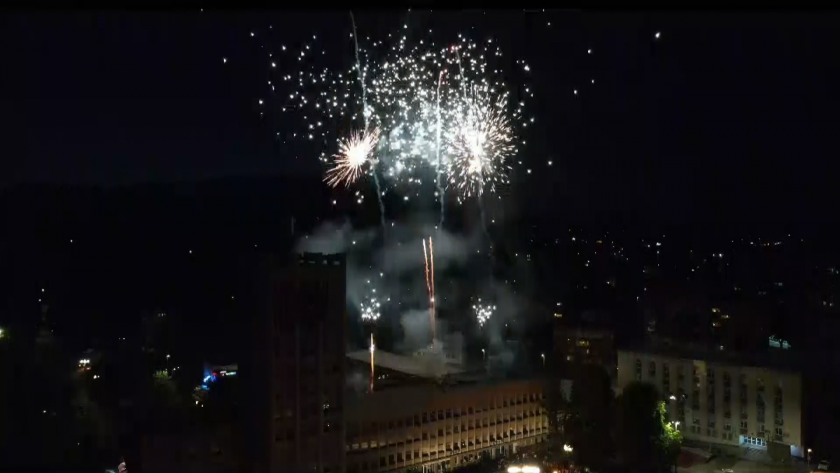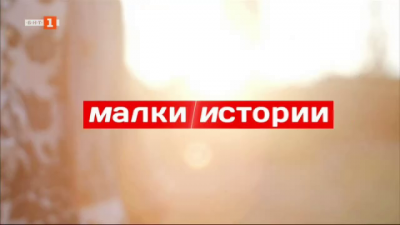Bulgaria marks 145 years since the Battle of Shipka Pass

The celebrations commemorating 145 years since the battle for the defence of the Shipka pass during the Russo-Turkish War of 1877-1878, also known as the Shipka epopee, began in the city of Gabrovo with fireworks display on August 20.
People in the square paid tribute to the memory of those who died heroically for the freedom and independence of Bulgaria. The defence of the Shipka Pass in August 1877 turned the tide of the Russo-Turkish War of Liberation and opened the way to the restoration of the Bulgarian state after five centuries of Ottoman rule.
The fireworks display in Gabrovo was received by the commander of the Land Forces, Major General Mikhail Popov. Tomorrow, August 21, the official celebrations will take place in front of the Monument of Freedom on the historic Shipka Peak.
As part of the tradition, the celebrations on Shipka Peak will be held under the auspices of Bulgaria’s President and Commander-in-Chief, Rumen Radev.
***
The battle for the defence of the Shipka Pass is one of the most heroic and decisive battles during the Russo-Turkish Liberation War of 1877-1878. The most dramatic of those took place from the 21st to the 26th of August (or from the 9th to the 14th of August old style calendar) 145 years ago.
The battles between the defenders of the pass and the Turkish army entered Bulgarian history under the name Shipka Epopee.
The task of the small Russian-Bulgarian detachment under the command of Gen. N.G. Stoletov, numbering about 7,500 men, was to stop Suleiman Pasha's superior army (about 27,000 men and a reserve of 10,000), to prevent it from crossing the Balkans and to unite with the Turkish forces in northeastern Bulgaria in aid of the besieged army of Osman Pasha in Pleven. The battles for Shipka began on August 9/21, 1877.
For six days, Bulgarians and Russians repulsed the constant attacks of the Turkish camps with fire and bayonets. The most difficult and decisive for the defence was the third day - August 11/23, when the Turks were increasingly tightening the noose around the defenders, and the ammunition was running out. In the afternoon, Suleiman Pasha threw all his reserves into battle against the centre of the defence.
At this most critical moment, when the battle was nearly lost and it seemed that Shipka would fall, the first reinforcement sent by Gen. Radetski arrived from Gabrovo. In the evening all the companies of the 16th Rifle Battalion arrived and after a fierce battle the Turks retreated. Shipka was secured!
The fighting continued for the next three days, but the pass was firmly in the hands of the Russian army. Shipka's defence continued in the autumn and winter of 1877. This period went down in history as the "Winter Shipka Standing". Despite the cold and fog, despite the snowstorms and blizzards, the defenders of Shipka heroically defended the pass. For these days filled with courage and self-sacrifice, the telegraph announced with the short phrase: "Everything is calm on Shipka".
Russian soldiers and Bulgarian volunteers turned the pass into an impregnable fortress, "a closed door for the Turkish offensive in northern Bulgaria and an open door for the victorious march of the Russian army to Constantinople," according to Gen. Radetski.
After the fall of Pleven (November 29 / December 10, 1977), Russian troops crossed the Balkans in extremely severe winter conditions and captured the Turkish army of Veysel Pasha in the Sheynovo fortified camp on December 28, 1877 / January 9, 1878. Sheynovo was a worthy end to the Shipka epopee.
The victims that the Russian regiments and the Bulgarian companies gave to Shipka and in the field of Sheynovo are about 11,000 - killed, wounded and missing without a trace, and over 9,000 people were frozen and sick during the Winter Shipka camp.
The foundation stone of the Monument of Freedom was laid on August 26, 1922. The monument was completed in 1930. On August 26, 1934, the monument on Mount St. Nicholas was inaugurated by Tsar Boris III. The monument is 31.5 meters high and 890 steps lead to it. A bronze lion, a symbol of Bulgarian statehood, proudly stands above the central entrance. On the other three sides are written the names of Shipka, Sheynovo and Stara Zagora - the battlefields, reminiscent of the feat of the Bulgarian volunteers.
Image by: Archive

Get the latest news wherever you are!
Follow us on
Facebook
and
Instagram
Follow BNT’s YouTube channel
You can now also watch us on
TikTok
Find us on
Google News






















